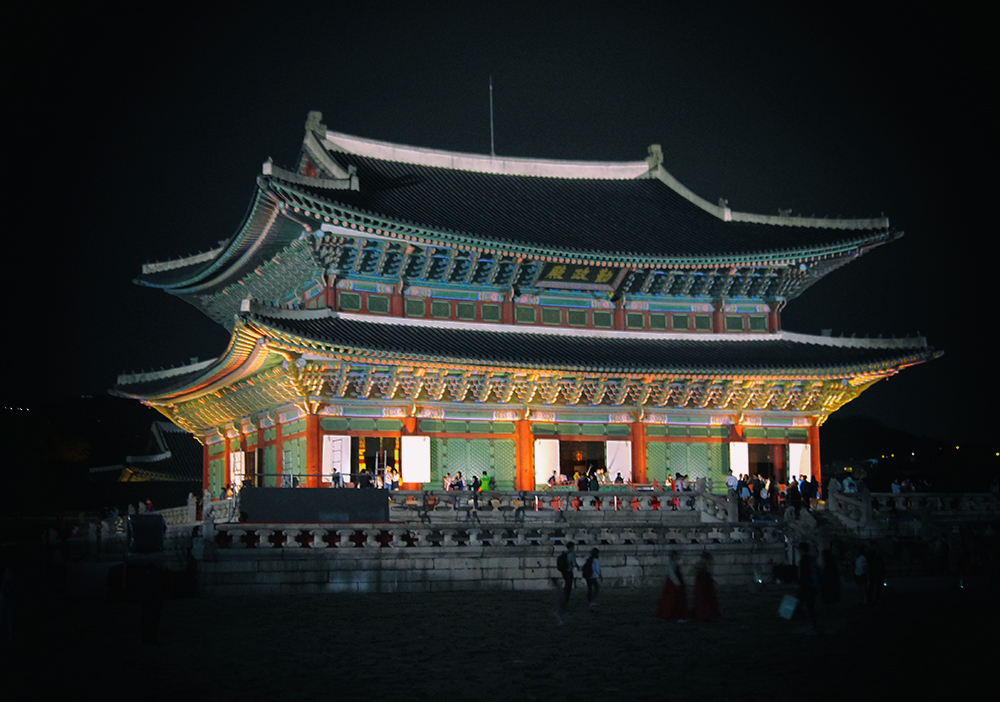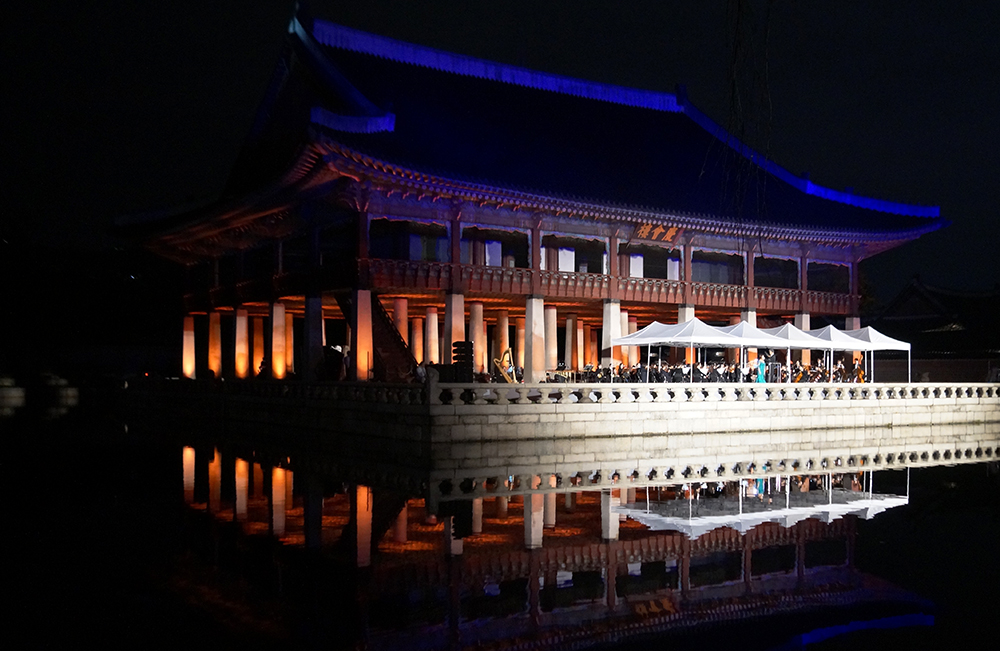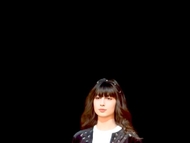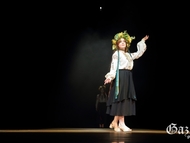
There are many Korean-style houses called hanoks across the country. Korea has designated important Korean buildings as cultural heritage sites like Gyeongbok Palace, which is Historic Site No. 117. Gyeongbok Palace and the surrounding hanoks are historical, so you can feel a strong Korean atmosphere. I’ll introduce Gyeongbok Palace and the historical Korean houses that are in this area of Seoul.

You can get to Gyeongbok Palace easily by public transportation. It is a short walk from Line 3’s Gyeongbok Palace Station. Gyeongbok Palace opens at 9 am and closes at 10 pm, but it is closed on Tuesdays. Admission is 3,000 won during the day, which you pay on-site. If you want to enter at night, you should reserve tickets online. There are two periods to view the palace at night: from July 16 to August 19 and September 24 to October 28. I recommend that you go there at night rather than the usual time because you can feel the ancient traditions with wonderful lights. If you miss the reservation period, you could borrow traditional Korean clothes called hanbok in one of the rental stores nearby. Everyone who wears hanbok can enter Gyeongbok Palace for free.

There are a variety of places and buildings to see at Gyeongbok Palace. In fact, the whole area of Gyeongbok Palace is a complex with several small palaces, as well as other buildings. There are control facilities for the king and administrators, living space for the royal family and outdoor rest areas in and around the palace. Because all the buildings are connected, it seems like a maze. Some parts were damaged during Japanese colonial rule, but fortunately the restoration project that started in the 1990s is almost complete.
Fortunately, I went there during the Court Culture Festival. During the festival, there is a royal court concert and an outdoor historical drama. An Orchestra and a royal court Korean dance concert were performed on an artificial lake at Kyonghoeru, which was wonderful to see on the water.
The festival also has a hanbok fashion show and photo exhibition that people can enjoy. There are special royal court restaurants that offer Korean meals and refreshment. All waiters wear hanbok, so they look like people from the distant past. It was like watching a historical drama in real life. All around Gyeongbok Palace, there are wonderful roof tiles and elaborate, patterned walls. Maybe the reason people come here is to see the Korean royal court and feel Korean culture.
If you want to see a neighborhood full of hanoks, go to Bukchon Hanok Village by walking in the direction of Anguk Station. Bukchon Hanok Village is a well-preserved, old-style urban neighborhood that’s been around for 600 years. Actually the residents still live there, so people are encouraged to quietly look around village. Clusters of many traditional Korean houses have a warm and friendly atmosphere. Broad and narrow alleys that have pretty wildflowers and butterflies were so impressive. These are not luxurious, but neat and useful houses that Joseon Dynasty officials lived in. Bukchon Hanok Village is free and open every day of the year.
In this area, there are many cafes that have observatories where you can see the village below. They are great places to feel grateful and relax your mind. You can also eat street food and enjoy the flea market.
During this trip, I realized that Korean culture has been well-preserved in beautiful places like Gyeongbok Palace and Bukchon Hanok Village. These places are very valuable to people’s heart and mind. Because the fee is low to visit most Korean cultural properties, you don't have to worry about money. Go out and enjoy some wonderful Korean heritage.








